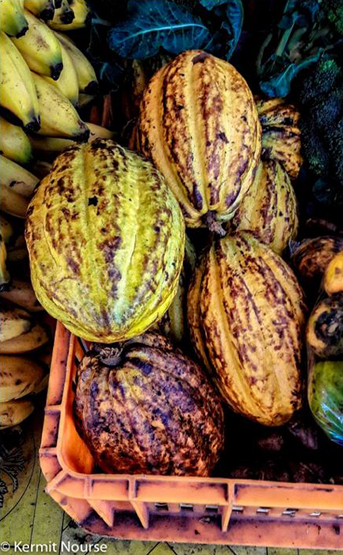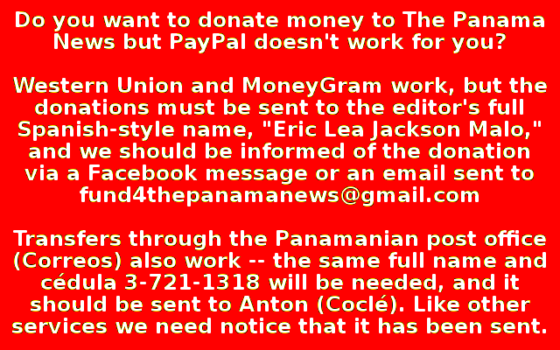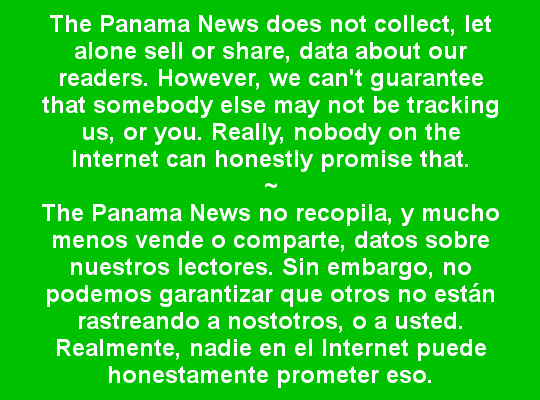
Cacao – raw material for the food of the Mayan gods
photo by Kermit Nourse, text by Eric Jackson
Chocolate. The Spanish conquistadors ran into it when they conquered the Aztecs, then encountered its ultimate fan base shortly thereafter when they conquered the cultures of the Mayan civilization, heirs to mighty kingdoms that were largely ruins overgrown by jungle by then. It’s not as if the Mayas just liked the stuff — the glyphs suggest to us a cacao god.
It is written and said that to ensure a constant supply of cacao ancient Mayans traded far and wide up and down the Meso-American Isthmus, and planted it in specially irrigated and shaded gardens in the Yucatan Peninsula where conditions are not right for its successful cultivation.
The trees demand not only shade but a lot of rain. You can grown them on the Pacific Side, but it’s the Caribbean littoral and offshore archipelagos where it really thrives in Panama. Commercially, it was Bocas del Toro and might be again. Culturally, it’s huge in Guna Yala. It also grows well in Darien and the Embera have their own recipes.
So did the Mayas import it from somewhere else? Will we “learn” from a smooth and literate hustler that it was ancient Swiss time and space travelers taking in a vacation in their flying saucer that brought chocolate to the Mayas? Do not be surprised in these days of alternative facts. But perhaps we should look to the scientists at the Smithsonian Tropical Research Institute or those who have followed in their footsteps to get the answer. See, retired Princeton professor and also STRI scientist Dolores Piperno developed a way of identifying fossilized microscopic starch grains from grindstones found by archaeologists and was a main protagonist in the search for the origins of domesticated corn (maize, for you Brits who make the distinction). The search went through Panama and ended in a valley in Mexico, upsetting prior theories of an Andean origin. The method, along with DNA analysis, is revolutionizing the prehistory of agriculture. It was used to trace a strain of peppers found in the Bahamas to origins in Bolivia. In pockets of peace and when lulls in the warfare permit it in the Middle East, sometimes religiously uncomfortable facts are being discerned using such techniques in the Fertile Crescent. (God help us if someone discovers that Abraham drank beer.) If somebody can get the right grants and most probably the blessing of indigenous authorities of several ancient nations, it may be possible to trace chocolate to its most ancient production.
See, it has traditionally involved grindstones — but would people who use wooden mortars and pestles beg to differ? What’s done is that cacao beans are harvested at the right time, the seeds and surrounding viscous pulp are scooped out and fermented — the heat from the fermentation melting away the goo — the seeds are dried, sorted and roasted, and then the roasted seeds are ground up into a paste. From there recipes will diverge. But with other ingredients or alone, with hot water or cold, you brew up a liquid concoction with the prepared cacao extract and agitate it to get a frothy head. In its traditional versions it’s this whitish beige, sort of bitter elixir, a drink that’s an acquired taste and, medical studies suggest, is good for you.
What? The Mayans didn’t put sugar and milk in it? Sugar, of course, is something that came to the Americas from Spain, having come there with the Arabs. Cattle, goats and their milk also came to New World cultures with the European Conquest.
In any case, you can buy many sorts of chocolate just about anywhere, but you can get cacao beans at farmers’ markets here and make your own chocolate, according to modern or ancient recipes of your choice. Or, in most of Panama, with greater or lesser success, you can grow your own.
~ ~ ~
These announcements are interactive. Click on them for more information.













